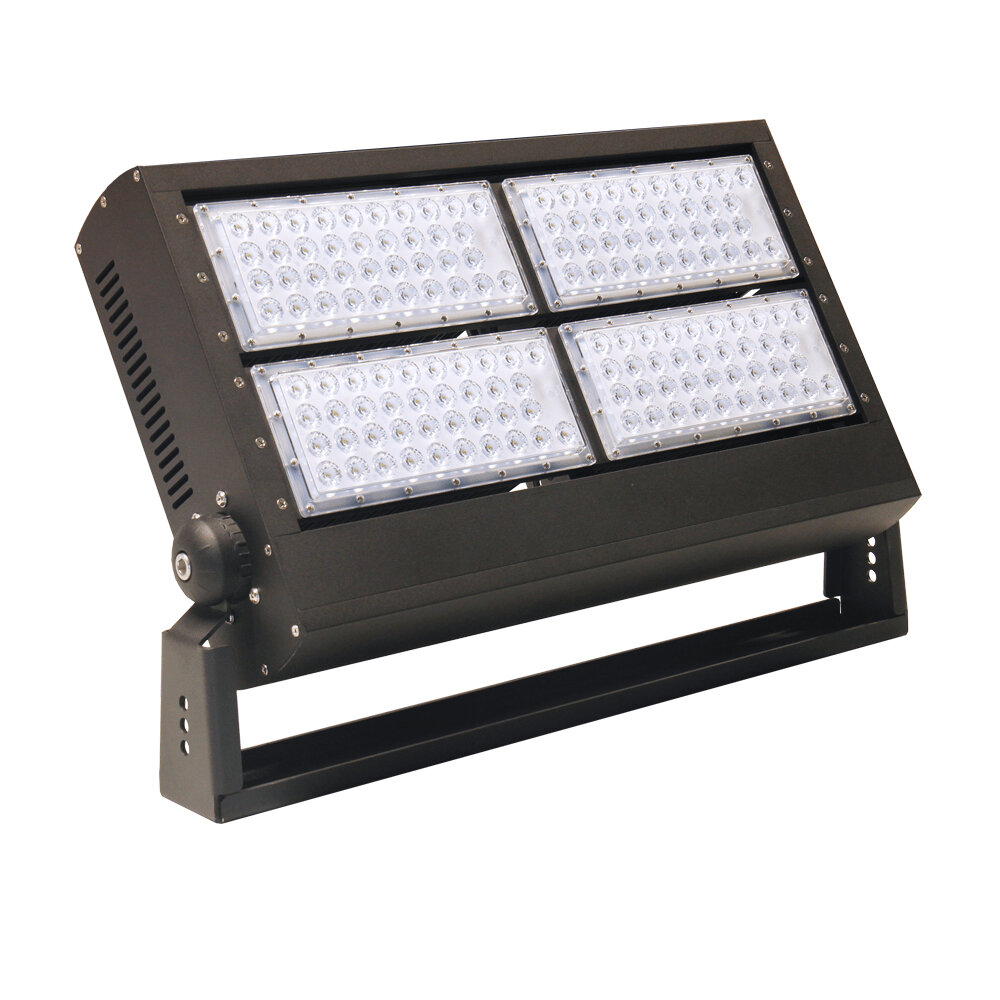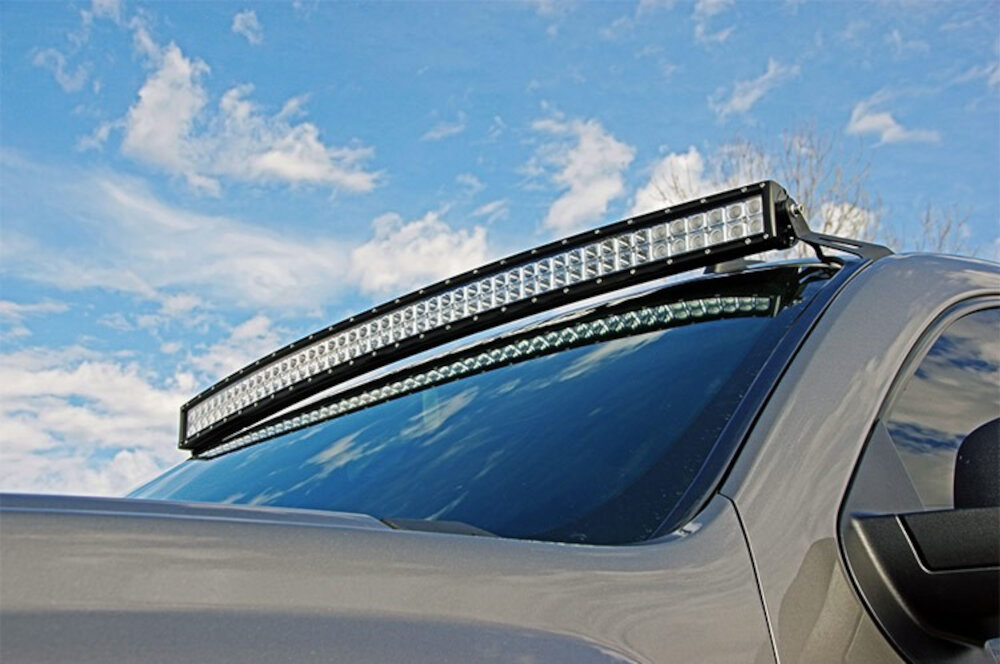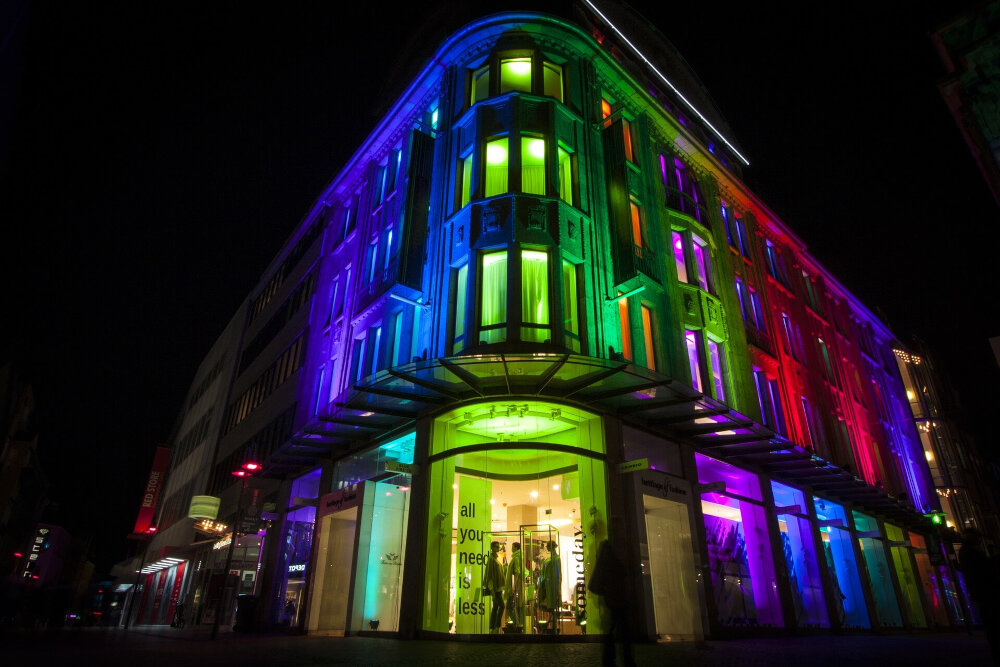Why LED Light Strips Flicker: Understanding the Common Causes and Solutions

LED light strips have become increasingly popular for both residential and commercial purposes. They are versatile, energy-efficient and can enhance the aesthetics of any space. However, one common issue that LED light strips often encounter is flickering. Flickering can be frustrating, distracting and can even cause headaches. Understanding the causes of LED light strip flickering and finding the right solutions is important to ensure that your lighting system works optimally. There are several reasons why LED light strips flicker, including voltage fluctuations, wiring issues, and driver problems. Additionally, the type of LED light strip and the way it is installed can also impact its performance. Fortunately, there are several solutions available to address these issues and prevent flickering. By understanding the common causes and solutions for LED light strip flickering, you can make informed decisions about selecting, installing and maintaining your lighting system.
LED light strips are a type of lighting technology that consists of a series of light-emitting diodes (LEDs) mounted on a flexible circuit board. These strips are available in various colors, sizes, and brightness levels, making them an excellent choice for a wide range of applications. LED light strips are energy-efficient, durable, and long-lasting, and they offer a low voltage operation that makes them safe and easy to use. They can be cut to fit specific lengths, making them versatile and adaptable to different spaces and surfaces. However, like any other electronic device, LED light strips may experience flickering issues, which can be caused by various factors, including power supply problems, improper wiring, or environmental factors.
LED light strips have become increasingly popular in recent years due to their versatility and energy efficiency. They can be used for a variety of applications such as accent lighting, task lighting, and even as a primary light source. LED light strips also offer a range of color options and can be easily controlled with a remote or smartphone app. In addition, they have a longer lifespan compared to traditional incandescent bulbs and require less maintenance. However, one common issue with LED light strips is flickering, which can be caused by a variety of factors such as voltage fluctuations or incompatible dimmer switches. Understanding the causes of flickering and implementing the proper solutions can ensure that LED light strips continue to be a reliable and effective lighting solution for any space.
LED light strips are a popular lighting solution for their energy efficiency, versatility, and affordability. However, they are prone to flickering, which can be a frustrating issue for users. The main reason behind LED light strip flickering is their dependence on direct current (DC) power supply. LED light strips require a consistent and stable flow of DC current to operate smoothly. Any fluctuations or interruptions in the current can cause flickering. Additionally, issues with the power source, such as inadequate voltage or improper wiring, can also contribute to flickering. Understanding the common causes of LED light strip flickering is crucial to finding effective solutions and ensuring a smooth and reliable lighting experience.
Voltage Fluctuation

Electrical voltage fluctuation, also known as voltage flicker, is a common issue that can cause LED light strips to flicker. Voltage fluctuation occurs when the voltage level in an electrical circuit changes from its normal level, which can happen due to various factors. Most commonly, voltage fluctuation occurs due to the presence of other electrical devices in the same circuit. When these devices are switched on, they can cause a sudden surge in voltage that leads to flickering in LED light strips. Other causes of voltage fluctuation include faulty wiring, loose connections, and power outages. To prevent voltage fluctuation from affecting LED light strips, it is essential to identify the root cause of the issue. One solution is to use a voltage regulator or stabilizer that can help maintain a constant voltage level in the circuit. Another solution is to ensure that no other electrical devices are connected to the same circuit as the LED light strips. Proper wiring and regular maintenance can also help prevent voltage fluctuations and ensure that LED light strips operate smoothly and without flickering. By being aware of the common causes of voltage fluctuation and taking appropriate steps to prevent it, users can enjoy the full benefits of LED light strips without any disruptions.
Voltage fluctuation refers to variations in the level of electrical power supplied to a device or system. These fluctuations can occur for a variety of reasons, such as changes in the load on the electrical grid, fluctuations in the supply voltage, or fluctuations in the demand for power. When voltage fluctuates, it can cause problems for sensitive electronic devices, such as LED light strips, which may flicker or dim as a result. To prevent voltage fluctuations, it is important to maintain a stable power supply and to use high-quality electrical components that can handle variations in voltage without malfunctioning. Additionally, installing voltage stabilizers or surge protectors can help to protect electronic devices from the damaging effects of voltage fluctuations.
Voltage fluctuation is one of the most common causes of LED light strip flickering, which can significantly affect their performance and lifespan. These fluctuations can be caused by various factors, including power surges, voltage drops, or electrical noise. When voltage drops, the LED light strips may dim, flicker, or fail to light up altogether. On the other hand, voltage surges can cause overloading and damage to the LED strips, leading to premature failure. Electrical noise can also cause flickering and dimming, and it’s often caused by nearby electrical devices and appliances. To prevent voltage fluctuations, it’s essential to use high-quality power supplies and ensure proper wiring and grounding of the LED light strips.
Voltage fluctuations can cause LED light strips to flicker, but there are several ways to stabilize voltage and prevent this issue. First, using a voltage regulator can help to maintain a consistent flow of electricity to the LEDs. Additionally, installing a surge protector can protect against power surges that can cause flickering. It is also important to ensure that the wiring and connections are properly installed and secure, as loose connections can cause voltage drops. Finally, using high-quality power supplies and LED drivers can ensure stable and consistent voltage, helping to prevent flickering and other issues. By taking these steps to stabilize voltage, LED light strips can provide reliable and consistent illumination.
Incompatible Dimmer Switches

Incompatible dimmer switches are one of the most common causes of LED light strip flickering. Traditional dimmer switches are designed for incandescent bulbs, which draw a lot of power and work differently from LEDs. When dimmer switches are used with LED light strips, they can cause flickering, humming, or buzzing. This is because LED light strips require a constant flow of voltage to function properly, while dimmer switches are designed to reduce voltage to incandescent bulbs by cutting off part of the power supply. The incompatibility between these two devices can cause fluctuations in the voltage, leading to flickering or other issues in LED light strips. To avoid these issues, it is essential to use a dimmer switch that is compatible with LED light strips. Modern dimmer switches are specifically designed for use with LEDs and provide a smooth, constant flow of voltage to the light strips, eliminating flickering and other problems. It is important to check the compatibility of your dimmer switch before installing LED light strips to ensure that it is designed to work with this type of lighting. If you are unsure about the compatibility of your dimmer switch, it is best to consult with a professional electrician who can help you choose the right switch for your needs. By using a compatible dimmer switch, you can enjoy the benefits of LED light strips without experiencing any flickering or other issues.
Dimmer switches are devices that help adjust the brightness of a light source. They work by changing the amount of electrical current flowing to the light, and thus changing its intensity. There are several types of dimmer switches available in the market, including rotary, sliding, and touch-sensitive switches. Dimmer switches are commonly used in homes and offices to create different lighting moods and save energy. However, not all dimmer switches are compatible with LED light strips, which can cause flickering and other issues. Therefore, it is important to choose the right dimmer switch for your LED light strip to avoid any flickering problems.
Incompatible dimmer switches cause flickering in LED light strips due to differences in their electrical properties. Traditional dimmer switches were designed to work with incandescent bulbs, which use a lot more power than LEDs. This means that the resistance in the circuit is different, and the dimmer switch may not be able to regulate the power correctly for the LED. As a result, the LED may flicker or even fail prematurely. Additionally, some dimmer switches use leading-edge technology, which sends a choppy waveform to the LED, causing it to flicker. To avoid this issue, it’s important to use a dimmer switch specifically designed for LED lights or to choose an LED light strip with a built-in dimmer.
When choosing a dimmer switch for LED light strips, it’s important to select one that is specifically designed for use with LED lights. The wrong dimmer switch can cause flickering or even damage to the lights. Look for a dimmer switch that is compatible with the type of LED light strips you have, such as 12-volt or 24-volt. Consider the maximum load capacity of the dimmer switch to ensure it can handle the wattage of your LED light strips. Additionally, look for a dimmer switch that has a smooth dimming range to prevent flickering and ensure a comfortable lighting experience. Some dimmer switches also have additional features, such as remote control or programmable settings, which can enhance the functionality and convenience of your LED light strip system.
Overloading

Overloading is a common cause of LED light strip flickering. This occurs when the LED strip is subjected to more voltage than it can handle. This can occur when too many LED light strips are connected to a power source that cannot handle the load. This can also occur when the power source is not strong enough to handle the load of the LED light strips. Overloading can cause the LED lights to flicker or even fail completely. To prevent this from happening, it is important to use a power source that can handle the load of the LED light strips and to not connect too many LED light strips to a single power source. Another common cause of LED light strip flickering is electrical interference. This can occur when the LED light strip is too close to other electrical devices, such as a microwave, a TV, or a computer. The electrical signals from these devices can interfere with the LED light strip, causing it to flicker. To prevent this from happening, it is important to keep the LED light strip away from other electrical devices. If this is not possible, it may be necessary to shield the LED light strip from the electrical signals of other devices. To do this, a shielded power cable or a shielded LED light strip may be necessary.
Overloading refers to the situation when a device, component, or system is subjected to more electrical current or power than it can handle. In the context of LED light strips, overloading can occur when the voltage or current supplied to the circuit exceeds the rated capacity of the strip. This can lead to a number of problems, including flickering, dimming, and even permanent damage to the LED chips. Overloading can be caused by a variety of factors, including improper wiring, faulty power supplies, or simply using too many LED strips on a single circuit. To prevent overloading, it is important to carefully select the appropriate power supply and wiring for the LED strip and to avoid exceeding the rated capacity of the circuit.
Overloading can have a significant impact on LED light strips, causing them to flicker or even fail altogether. Overloading occurs when too much current is flowing through the LED strip, which can be caused by using a power supply that is not suitable for the strip or by connecting too many strips together. This increased current can cause the LEDs to heat up, resulting in a decrease in the lifespan of the LED strip. Additionally, overloading can cause the LEDs to become unstable, resulting in flickering or a loss of brightness. It is important to properly calculate the power requirements of the LED strip and use an appropriate power supply to avoid overloading and ensure optimal performance.
Overloading and flickering are common problems encountered when using LED light strips. It is essential to take measures to prevent these issues from occurring. One way to avoid overloading is to ensure that the power supply matches the wattage of the LED strip. It is also crucial to distribute the load evenly among the power supplies. To prevent flickering, using high-quality LED light strips that come with a stable power source is recommended. Additionally, it is essential to avoid using incompatible dimmer switches or controllers that can cause the LED light strips to flicker. Regular maintenance and cleaning of the LED light strips can also prevent flickering caused by dust or dirt buildup. By taking these preventative measures, you can enjoy a reliable and consistent lighting experience with your LED light strips.
Faulty Light Strips

Faulty light strips are a common cause of LED light strip flickering. This can happen for a variety of reasons, including poor manufacturing, damage during shipping or installation, or simply wear and tear over time. In some cases, the electronics inside the light strip may be damaged or malfunctioning, causing the strip to flicker or dim. It is important to carefully inspect your light strips before installation to ensure they are free from any defects or damage. If you notice any issues with your light strips, it is best to replace them with new ones rather than attempting to repair them. Another common cause of faulty light strips is improper installation. If the strips are not installed correctly, they may not receive proper power or may be exposed to moisture or other environmental factors that can cause damage. Additionally, if the power source for the light strips is not properly regulated, this can cause the strips to flicker or dim. To avoid these issues, it is important to carefully follow the manufacturer’s instructions for installation and use. This may involve using specific tools or materials, such as adhesive strips or connectors, to ensure a secure and stable connection. By taking the time to properly install and maintain your LED light strips, you can help prevent flickering and ensure long-lasting, reliable performance.
There are several reasons why LED light strips may become faulty, with flickering being a common issue. One of the main causes of flickering is voltage drop, which occurs when the LED light strip is placed too far away from the power source or if the wiring is inadequate. Another cause is electromagnetic interference, which can be caused by nearby appliances or other electronic devices. Poor quality LED light strips can also cause flickering, as well as overheating due to insufficient ventilation. In addition, incorrect installation or wiring can lead to faulty LED light strips, which can cause them to flicker or fail completely. To avoid these issues, it is important to choose high-quality LED light strips and ensure that they are installed and wired correctly.
Identifying faulty LED light strips can be a challenging task, especially if you are not familiar with the working principles of LED lighting. One of the most common signs of a faulty LED light strip is flickering, which occurs as a result of poor connections or a damaged power supply. You can also look out for dimming or uneven lighting, which can be caused by a faulty driver or a damaged LED chip. Additionally, if you notice that some of the LED lights are not working, it could be due to a circuit break or a damaged LED strip. To identify faulty LED light strips, it is important to conduct a thorough inspection of the wiring, connections, and power supply to identify any signs of damage or wear and tear.
Faulty LED light strips can be a frustrating issue to deal with, but fortunately there are several solutions available to fix the problem. The first step in resolving flickering LED light strips is to identify the root cause, which can range from issues with the power supply to incorrect wiring. Once the cause has been determined, solutions such as replacing the power supply or adjusting the wiring can be implemented to fix the issue. Additionally, upgrading to higher quality LED light strips or installing a dimmer switch can help prevent flickering and ensure a more consistent lighting experience. By taking the time to identify and address the root cause of flickering LED light strips, it is possible to enjoy reliable and high-quality lighting for years to come.
LED light strips are a popular lighting option in homes and businesses due to their energy efficiency and versatility. However, one common issue that users may encounter is flickering. Flickering can be caused by a variety of factors, including poor quality LED strips, voltage fluctuations, incompatible dimmer switches, and loose connections. Additionally, flickering can occur when the LED strip is being operated at a frequency that is too low, causing the human eye to perceive the light as flickering. Understanding the common causes of flickering and taking steps to address them can help ensure that LED light strips provide consistent, reliable lighting.
Addressing flickering issues in LED light strips is of utmost importance as it not only affects the overall aesthetics of the lighting but also poses a risk to health and safety. Flickering can cause eye strain, headaches, and even epileptic seizures in sensitive individuals. Furthermore, it can also lead to a decrease in productivity and concentration levels. The issue can be caused by several reasons, including incorrect installation, faulty power supplies, or incompatible dimmer switches. Therefore, it is crucial to identify the underlying cause and implement the appropriate solution to ensure a stable and safe lighting experience. Failure to address flickering issues may result in potential hazards and discomfort, making it imperative to prioritize the issue and seek professional assistance if necessary.
LED light strip flickering is a common issue that can be quite frustrating for users. However, there are several solutions to prevent and fix this problem. Firstly, ensuring that the power supply is compatible with the LED light strip can be helpful. Secondly, checking and replacing any damaged or worn-out components such as the power adapter and connectors can make a difference. Additionally, adding a capacitor or resistor to the circuit can help stabilize the voltage and prevent flickering. Finally, updating the firmware of the LED controller or using a different controller altogether can also provide a solution. By following these solutions, users can enjoy uninterrupted and stable lighting from their LED light strips.
Conclusion

In conclusion, LED light strips flickering is a common issue that can be caused by various factors. These factors include power supply issues, insufficient voltage, improper wiring, and temperature changes. However, there are several solutions to rectify this problem, such as using a stable power source, checking the wiring connections, and installing a voltage regulator. It is crucial to understand the common causes of LED light strip flickering and implement the appropriate solutions to ensure a consistent and reliable lighting experience. By doing so, you can enhance the ambiance of your space and avoid the annoyance and inconvenience of flickering lights.




